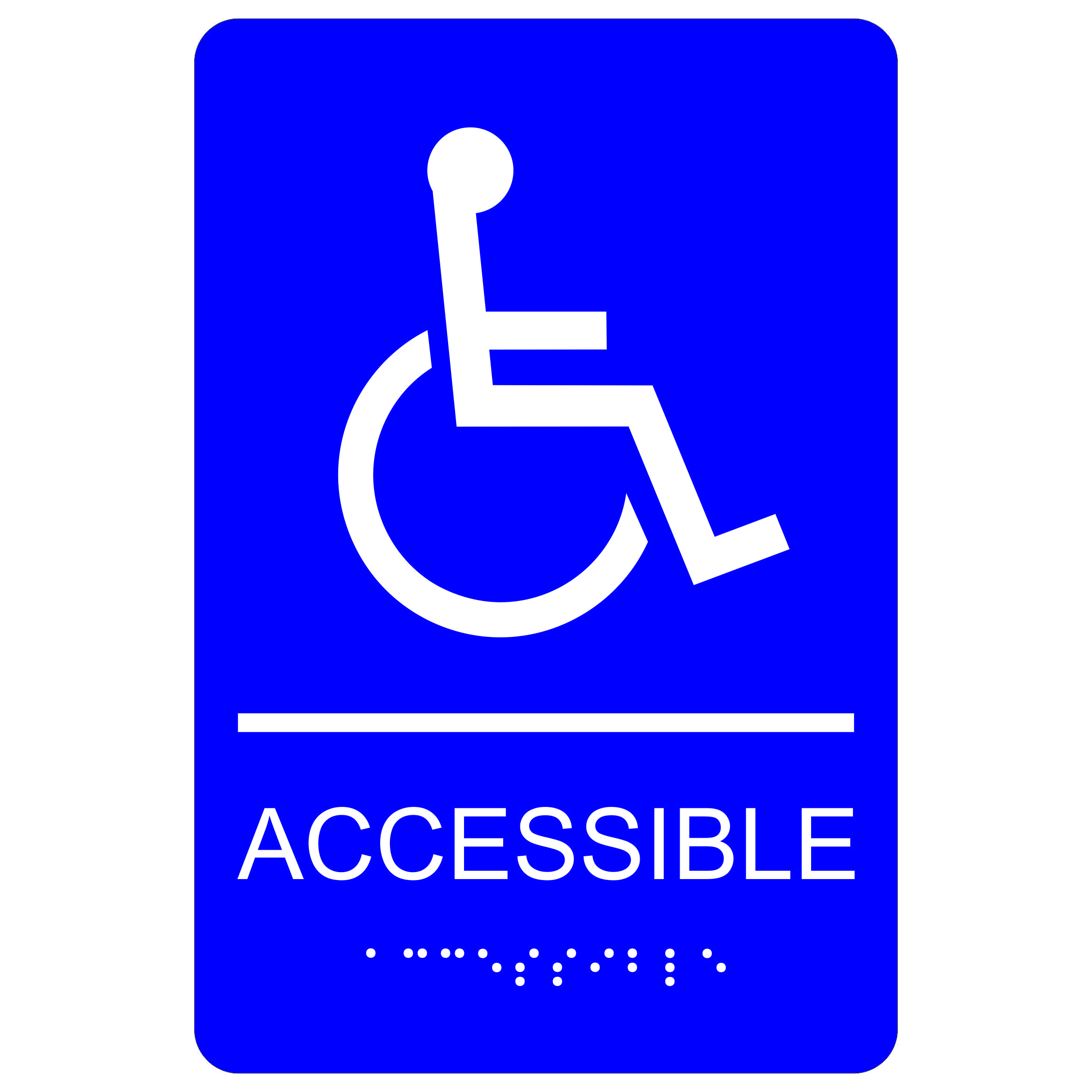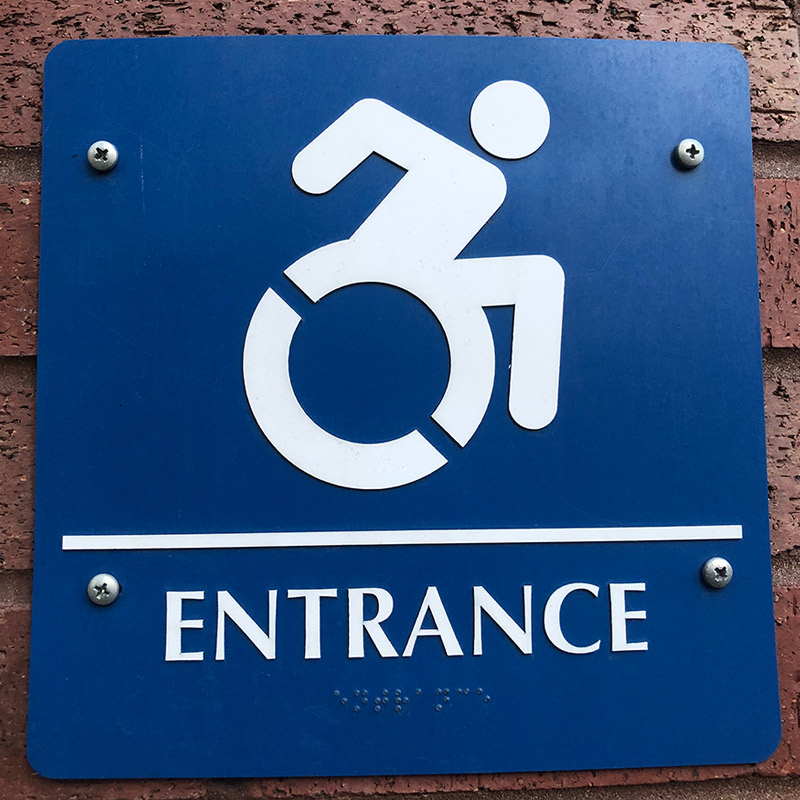A Comprehensive Overview to Selecting the Right ADA Signs
Discovering the Key Features of ADA Indications for Boosted Accessibility
In the world of accessibility, ADA signs serve as silent yet powerful allies, making sure that areas are accessible and comprehensive for individuals with disabilities. By incorporating Braille and responsive elements, these signs damage obstacles for the aesthetically damaged, while high-contrast color schemes and clear typefaces cater to diverse aesthetic demands. Their tactical positioning is not approximate yet rather a computed initiative to assist in seamless navigating. Yet, past these attributes lies a deeper story concerning the development of inclusivity and the continuous dedication to creating fair spaces. What much more could these indicators represent in our search of global ease of access?
Significance of ADA Compliance
Making certain conformity with the Americans with Disabilities Act (ADA) is vital for cultivating inclusivity and equal access in public spaces and work environments. The ADA, passed in 1990, mandates that all public centers, companies, and transport services fit people with disabilities, guaranteeing they delight in the same civil liberties and opportunities as others. Compliance with ADA criteria not only meets lawful commitments however also boosts an organization's credibility by demonstrating its commitment to diversity and inclusivity.
One of the crucial aspects of ADA conformity is the execution of easily accessible signage. ADA signs are made to make certain that individuals with impairments can conveniently browse with rooms and buildings.
Moreover, sticking to ADA policies can mitigate the threat of potential penalties and lawful consequences. Organizations that fail to follow ADA standards may face charges or claims, which can be both economically burdensome and destructive to their public image. Thus, ADA compliance is indispensable to cultivating a fair setting for everybody.
Braille and Tactile Aspects
The unification of Braille and tactile elements right into ADA signs symbolizes the principles of ease of access and inclusivity. These functions are essential for people that are blind or aesthetically impaired, enabling them to navigate public rooms with higher independence and confidence. Braille, a responsive writing system, is vital in giving written info in a layout that can be easily viewed via touch. It is generally put under the corresponding message on signs to ensure that people can access the information without visual aid.
Responsive components expand past Braille and consist of increased icons and characters. These elements are created to be discernible by touch, enabling individuals to identify room numbers, restrooms, exits, and various other crucial areas. The ADA establishes details standards pertaining to the dimension, spacing, and placement of these tactile components to enhance readability and guarantee consistency throughout various atmospheres.

High-Contrast Color Pattern
High-contrast shade plans play a pivotal duty in improving the visibility and readability of ADA signs for individuals with aesthetic impairments. These systems are necessary as they maximize the distinction in light reflectance between message and background, making certain that indications are easily noticeable, even from a distance. The Americans with Disabilities Act (ADA) mandates making use of certain color contrasts to suit those with restricted vision, making it an essential facet of compliance.
The efficiency of high-contrast colors depends on their capability to stand apart in various illumination problems, including poorly lit environments and areas with glow. Generally, dark message on a light history or light text on a dark history is used to accomplish optimum contrast. As an example, black text on a yellow or white background offers a raw visual difference that helps in fast acknowledgment and understanding.
Legible Fonts and Text Dimension
When considering the design of ADA signs, the option of clear fonts and proper text size can not be overemphasized. These components are essential for guaranteeing that indicators come to people with visual disabilities. The Americans with Disabilities Act (ADA) mandates that font styles must be not italic and sans-serif, oblique, manuscript, highly ornamental, or of uncommon form. These demands aid make sure that the text is conveniently readable from a range which the characters are view it now distinguishable to varied target markets.
The size of the message likewise plays an essential function in ease of access. According to ADA standards, the minimal text elevation must be 5/8 inch, and it ought to increase proportionally with viewing range. This is specifically vital in public rooms where signage demands to be read quickly and accurately. Consistency in message size adds to a cohesive visual experience, look here assisting people in browsing atmospheres effectively.
Furthermore, spacing in between letters and lines is indispensable to legibility. Appropriate spacing stops personalities from appearing crowded, boosting readability. By adhering to these criteria, designers can considerably boost availability, ensuring that signage offers its desired purpose for all people, no matter of their visual abilities.
Reliable Positioning Techniques
Strategic positioning of ADA signs is vital for taking full advantage of access and ensuring compliance with lawful criteria. Correctly positioned indications lead people with disabilities efficiently, assisting in navigating in public rooms. Key considerations include elevation, distance, and presence. ADA guidelines state that signs need to be installed at an elevation in between 48 to 60 inches from the ground to ensure they are within the line of sight for both standing and seated individuals. This typical elevation array is critical for inclusivity, enabling wheelchair customers and people of differing elevations to gain access to info effortlessly.
In addition, indications need to be put beside the lock side of doors to enable easy identification prior to entrance. This placement aids people locate areas and rooms without obstruction. In cases where there is no door, indicators must be positioned on the nearby nearby wall surface. Uniformity in sign positioning throughout a facility enhances predictability, lowering confusion and improving general user see post experience.

Conclusion
ADA signs play an important function in advertising accessibility by integrating functions that attend to the demands of individuals with specials needs. These components jointly foster an inclusive setting, emphasizing the importance of ADA compliance in guaranteeing equivalent gain access to for all.
In the world of access, ADA indicators serve as quiet yet effective allies, guaranteeing that spaces are comprehensive and accessible for people with handicaps. The ADA, established in 1990, mandates that all public centers, companies, and transport services accommodate individuals with disabilities, guaranteeing they appreciate the exact same legal rights and opportunities as others. ADA Signs. ADA indicators are created to guarantee that individuals with handicaps can quickly navigate with areas and buildings. ADA standards stipulate that indicators must be mounted at an elevation between 48 to 60 inches from the ground to guarantee they are within the line of sight for both standing and seated people.ADA indications play a vital duty in promoting access by incorporating functions that address the demands of people with impairments